Amaro 101: An Introduction to Italian Amari
Amari (the plural of amaro, the Italian word for “bitter”) are a class of bitter Italian liqueurs principally employed for their digestive qualities, either before or after a meal (aperitivo/digestivo). I must admit I don’t understand the science behind the practice, but I can tell you from experience that they usually work.

There are quite a few popular amari available in the US, and many more are enjoyed regionally throughout Italy. In the US, bitter drinks are far less popular than in the old country, but adventuresome drinkers are beginning to appreciate their complexity stateside.
It could be argued that today’s most popular vehicle for amaro consumption in the US is the Negroni—a classic cocktail that is itself a spin on an even older drink called the Americano. Both involve Milano’s world famous Campari amaro, but there are at least six other amari you can probably find at a liquor store or bar near you. Let’s take a closer look at all seven and find out where they’re from, what makes them unique, and most importantly how to drink them!
Aperol
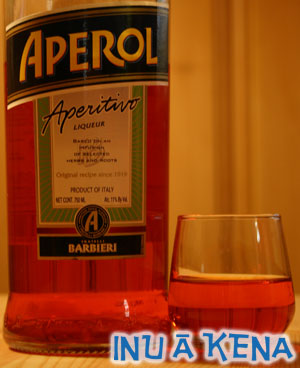
Aperol was introduced in 1919 in the city of Padua. Brothers Silvio and Luigi Barbieri thought a low alcohol amaro would fill an unmet need in the marketplace. It’s been fairly popular ever since—mostly due to the notion of combining it with the dry Italian sparkling wine called Prosecco–the Aperol Spritz. Aperol is a less bitter amaro which makes it a good gateway to the more palate-challenging amari. It’s got a very prominent orange flavor that is easy drinking and combines well with sparkling wine or soda.
Barbieri was acquired by Gruppo Campari in 2003.
![]()
| Origin | Proof | Known Ingredients | Principal Flavors | Cost/750 ml |
| Padua | 22 | Bitter orange, gentian, rhubarb, and cinchona | Orange, moderately bitter | $22 |
Aperol Cocktails
Aperol Spritz
- 2 oz Aperol
- 3 oz Prosecco
- Splash of soda
Build over ice in a double old fashioned glass and garnish with an orange slice.
Intro to Aperol
- 1 oz gin
- 2 oz Aperol
- ¾ oz fresh lemon juice
- ¼ oz simple syrup
- 1 dash Angostura bitters
Shake with ice and strain into a chilled coupe or cocktail glass. Garnish with a flamed orange twist.
-Audrey Saunders, Pegu Club
Averna
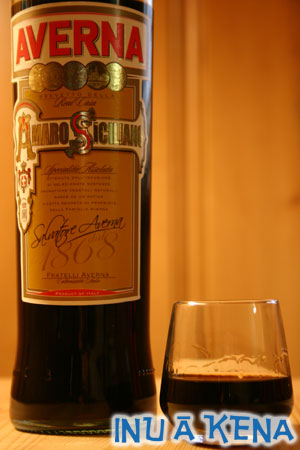
Born in Sicily, Salvatore Averna was a Sicilian businessman who was a benefactor of the local monastery called Saint Spirito’s Abbey. The monks there made a bitter herbal elixir, and in 1859 they gave the recipe to Salvatore as a token of gratitude. In 1868, Salvatore began making the elixir for his friends and family, and later his son Francesco brought Averna renown by showing it at fairs in Italy and elsewhere. The company remains family-owned and is today managed by the fourth generation of the Averna family. [UPDATE: Gruppo Campari acquired Fratelli Averna for $143.4 million on April 15, 2014]
Averna is a nice easy drinking amaro that is perfect for a dessert-like experience. The rich brown liquid hold flavors or licorice and citrus combined with chocolate, vanilla and other goodies. The Black Manhattan is a perfect way to enjoy Averna in a cocktail (recipe below).
![]()
| Origin | Proof | Known Ingredients | Principal Flavors | Cost |
| Caltanissetta, Sicily | 64 |
“Herbs, roots and citrus rinds” |
Licorice, citrus peels, chocolate | $26 |
Averna Cocktails
Black Manhattan
- 2 oz Bourbon
- 1 oz Averna
- 1 dash Angostura bitters
Stir with ice and strain into a chilled cocktail glass. Garnish with a cherry.
Beatnik
- 1 oz Bourbon
- 1 ½ oz Averna
- ½ oz Tawny Port
Rinse a cocktail glass with the port. Stir the bourbon and Averna with ice and strain into the cocktail glass. Garnish with a flamed orange peel.
-Duggan McDonnell
Campari
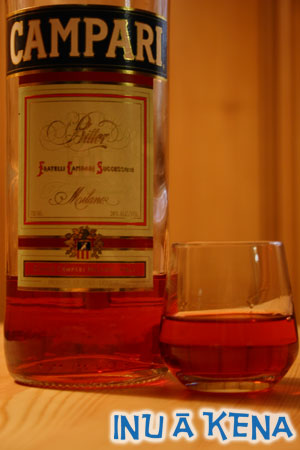
Originally called Bitter Uso Campari, it was invented by Gaspare Campari in Novara in 1860. By 1880, Campari had caught on as an aperitivo rather than a digestive, which gained it a unique place in the market. Around the turn of the century, Campari opened their first large-scale production plant in Sesto San Giovanni and began exporting Campari overseas. Over time, Campari found its way into numerous cocktails such as the Milano Torino (the original name of the Americano) and the Negroni. Today Campari sells almost three million cases per year (about 7.1 million gallons).
Campari is tough to describe, but bitter orange would have to be prominent in any description of its flavor. If you haven’t tried Campari, I would recommend beginning with the Americano. The combination of the bitter amaro, the sweet vermouth and the sparkle of the soda is a fantastic spring or summer cooler. Great for bottled cocktails as well!
| Origin | Proof | Known Ingredients | Principal Flavors | Cost |
| Milan | 48 | Rhubarb, chinotto, ginseng, angostura, gentian, unspecified herbs | Bitter orange | $24 |
Campari Cocktails
Americano
- 1 oz Campari
- 1 oz sweet vermouth
- Club soda
Add Campari and vermouth to an old fashioned glass. Add cracked ice and top with soda. Garnish with an orange twist.
Negroni
- 1 oz Campari
- 1 oz sweet vermouth
- 1 oz gin
Stir with ice and strain into an old fashioned glass filled with cracked ice. Garnish with a wide orange twist.
CioCiaro
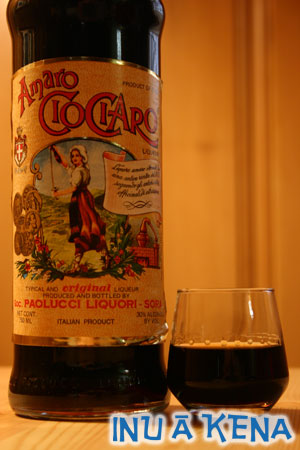
Amaro CioCiaro is named after the Ciociaro region in Italy. It was here that the Paolucci family began producing this bitter liqueur in 1873. Interestingly, the Ciociaro region does not have an official border, rather it was a name given in 1927 by the fascist movement of Frosinone as an ethnic denomination for the Lazio town’s province. The name refers to a traditional type of sandal, the “ciocia”, which you can see being worn by the woman on the CioCiaro label.
In recent years, CioCiaro has gained popularity as a substitute for the original formulation of a famous French amaro called Amer Picon. This curious substitution came from author David Wondrich, who compared a bottle of the original Amer Picon to a variety of other amari he had on-hand:
“After much nosing and not a little tasting, the closest match in aroma and taste proved to be the 60-proof Amaro Ciociaro. Now, it’s not a perfect match (it’s a little more herbal), and admittedly 60 proof isn’t the same as 78 proof, but it does a great job of evoking the clean orange notes of the old Picon without being nearly as watery as the new Picon. Plus it avoids the vegetal notes of the Torani, which are entirely absent in the old Picon.” –eGullet Forum, 3/25/2007
AlthoughI haven’t tried the historical Amer Picon, now that I’ve had the chance to taste both the Torani Amer and the CioCiaro, I can say that I wholeheartedly agree with Mr. Wondrich. Its fantastic bitter orange flavor coupled with its viscosity, sweetness and herbal subtleties make this amar far superior to the Torani Amer.
| Origin | Proof | Known Ingredients | Principal Flavors | Cost |
| Colle d’Arte | 60 | ? | Orange, cinammon | $19 |
Amaro CioCiaro Cocktails
Picon Punch
- 2 ½ oz Amaro CioCiaro (in place of Amer Picon)
- ¼ oz homemade grenadine (or more to taste)
- 1 oz Cognac
- Club soda
Add CioCiaro, cognac and grenadine to a tall glass filled with cracked ice and stir gently. Top up with club soda.
Brooklyn Cocktail
- 1 1/2 oz rye or bourbon
- 1/2 oz dry vermouth
- 1/4 oz Amaro CioCiaro (in place of Amer Picon)
- 1/4 oz maraschino liqueur
Stir with ice & strain into a chilled cocktail glass.
Cynar
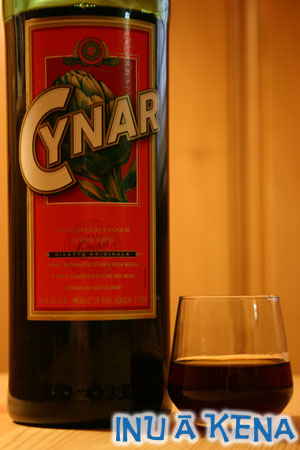
Cynar is in the class of amari called carciofo, or artichoke. That’s right, there’s more than one artichoke amaro. The name Cynar comes from the artichoke’s Latin name: cynara scolymus. There’s not a lot of information out there about Cynar, likely because the brand is relatively new—it was introduced in 1952. Its rise to prominence was due in large part to a series of 1960s TV ads starring Italian film star Ernesto Calindri. In 1995, Cynar was bought by Gruppo Campari. Today Cynar is finding its way into a variety of craft cocktails such as the Berlioni—a Negroni variant popularized by Jim Meehan’s PDT Cocktail Book.
The flavor of Cynar is definitely not artichoke. Vegetal yes, herbal yes, but I can’t say that I pick out artichoke. It’s really nicely balanced and can work quite well in cocktails calling for other amari. Cynar is not as thick as some of the others, nor is it as sweet (the two are surely related) hence it plays well with others.
| Origin | Proof | Known Ingredients | Principal Flavors | Cost |
| Italy | 33 | 13 herbs and plants, one of which is artichoke | Vegetal, herbal | $26 |
Cynar Cocktails
Berlioni
- 1 ½ oz gin
- ¾ oz Cynar
- ½ oz dry vermouth
Stir with ice and strain into an old fashioned glass with one large ice cube. Garnish with an orange peel.
-Jim Meehan, Please Don’t Tell
Scorched Earth
- 1 ½ oz Cognac
- ½ oz sweet vermouth
- ½ oz Cynar
Stir with ice and strain into a chilled cocktail glass. Garnish with a flamed lemon twist.
-Nicholas Hearin, Restaurant Eugene
Fernet Branca
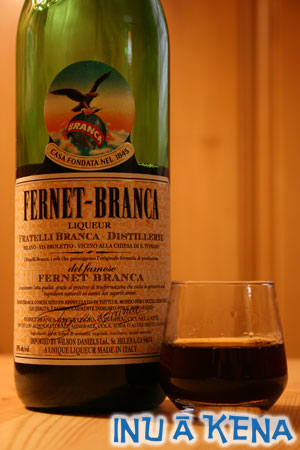
In 1845, Bernadino Branca began producing a bitter liqueur called Fernet Branca. In 1862, joined by his brother Stefano, the Fratelli Branca launched complementary products, many of which won awards at worldwide expositions around the turn of the century. Over the years, Fratelli Branca has remained a family-owned enterprise, and has acquired other businesses such as Carpano (Punt e Mes) and launched new products including liqueurs and grappas. Today it is helmed by Niccolò Branca.
Fernet Branca has a special place in the hearts of San Franciscans where it has been popular for over a hundred years. As recently as 2010, more than one third of the entire country’s Fernet Branca was consumed within the city limits. As the industry drink of choice, a shot of Fernet Branca has been called the “bartender’s handshake”. It’s on tap at least two San Francisco bars that I’m aware of, and there’s even a hip-hop song dedicated to it.
Outside of Italy and San Francisco, you’re likely to find ardent Fernet Branca fans in Argentina, where Fernet Branca and Coca-Cola is considered to be the national drink of choice.
What’s so great about Fernet Branca? It’s hard to explain, but beyond its ample street cred, it’s got a few things going for it. One is the 40% ABV; 80 proof amari are hard to come by, and this one goes down smooth. It bears some similarities to Jaegermeister, but it’s refreshingly clean tasting and not at all syrupy. The principal flavors are akin to an herbal cough drop, but altogether pleasant–menthol, eucalyptus–these are the types of flavors here, but one simply must try it to understand its greatness.
Finally, it should be noted that while many folks routinely refer to Fernet Branca as “Fernet”, doing so can be misleading, as Fernet is a classification of amaro, not a brand. Cinzano and Luxardo both make Fernet amari, as do others such as Paolucci.
| Origin | Proof | Known Ingredients | Principal Flavors | Cost |
| Via Resegone, Milano | 80 | Myrrh, rhubarb, chamomile, cardamom, aloe, saffron | Menthol, eucalyptus | $27 |
Fernet Branca Cocktails
The Fernet Branca Cocktail
- 1 ½ oz gin
- ½ oz sweet vermouth
- ½ oz Fernet Branca
Stir with ice and strain into a chilled cocktail glass. Garnish with a cherry.
Hanky Panky Cocktail
- 1 ¾ oz gin
- ¾ oz sweet vermouth
- ¼ oz Fernet Branca
Stir with ice and strain into a chilled cocktail glass. Garnish with an orange twist.
Ramazzotti
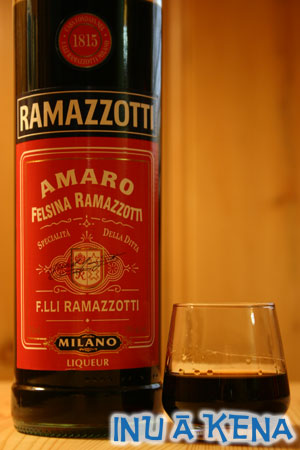
In 1815, Ausano Ramazzotti developed a bitter liqueur with a slightly less bitter profile than other amari available at the time. His formulation was well-received, but it was his idea to open a small café near a local theater that launched his Ramazzotti amaro into prominence. You see, there was no coffee at the café, just his amaro. Soon after, Ramazzotti became the preferred amaro throughout Italy. Ramazzotti was acquired by Pernod Ricard in 1985.
Ramazzotti is similar to Averna in its level of sweetness and viscosity. The main flavor here is decidedly licorice, but it’s not as much as a straight up pastis liqueur. It’s nuanced enough to be a good cocktail component. Try the classic Chaplin cocktail and you’ll know what I mean!
![]()
| Origin | Proof | Known Ingredients | Principal Flavors | Cost |
| Milan | 60 | 33 herbs and roots including orange peel, star anise, Angelica root, quinine, rose petals and vanilla | Licorice, vanilla, ginger | $23 |
Ramazzotti Cocktails
Angel’s Share
- 1 ½ oz bourbon
- ½ oz Ramazzotti Amaro
- ¼ oz crème de cassis
- 1 dash orange bitters
Stir with ice and strain into a chilled cocktail glass. Garnish with a lemon twist.
-Jamie Boudreau, Canon
Chaplin
- 3/4 oz bourbon
- 3/4 oz dry sherry
- 3/4 oz Ramazzotti Amaro
- 1/8 oz Cointreau
- 1 dash orange bitters
Stir with ice and strain into a chilled cocktail glass. Garnish with a lemon twist.
________________________________________________________________________
Now that you’ve been introduced, get out there and try some of these fantastic Italian amari! Many amari are an acquired taste, so please don’t give up on them if you don’t like one at first blush. Use the cocktail recipes above, but be sure to try them straight and with soda as well. Once you know their unique qualities, you can begin experimenting by swapping one amaro for another as in the case of the Negroni variation, the Berlioni. I hope to revisit this article as my amaro collection grows!
UPDATE! If you enjoyed this article, please read Amaro 102: Beyond Basic Bitters, which explores another eight Italian amari available stateside, and Amaro 103: Advanced Amari, which covers nine more, and Amaro 104, which covers yet another nine!
What’s your favorite way to enjoy amari? Which one should I add to the collection next? Please share your comments below.
Aloha,
Josh
Trackbacks
- Amaro 101: An Introduction to Italian Amari « Inu a Kena
- New Article: Amari 102: Beyond Basic Bitters | Inu a Kena
- Time Flies When You’re Having Rum | Inu a Kena
- 5 Things: Man Cave Edition | Wooden Spoon Society
- How to Start Reviewing Rums – Part 2 » The Lone Caner
- May 2015 Newsletter | Synergy Restaurant Consultants, Food Service Consulting
- Taste testing above the trees – ollibatical
- Checking out Amaro Lucano - Cocktail Wonk
- Cynar - First Pour Cocktails
- May 2015 Newsletter - Synergy Restaurant Consultants
I dislike the strong menthol notes in Fernet Branca. It reminds me of tooth paste in its aftertaste.
To each his own–it’s certainly not for everyone!
Uve tasted branca menta noob….
Nice intro to Amari. I like how the two Fernet cocktails are identical in ingredient, and just differ in ratio.
Personally, I love Campari and Negronis, but I’m hardpressed to say there’s any Amari on your list that I don’t think is worthwhile. I’m not crazy about Cynar, but I keep eyeing it and thinking about making it my next undertaking.
Thanks, Aaron! I love that you noticed the Fernet cocktail ingredients. Personally I just drink it straight 🙂
Cynar is really versatile due to its herbaceous qualities and the moderate sweetness. Plus it looks great on the back bar.
I have had all the amari in your rundown except the Amaro CioCiaro. When I saw Dave Wondrich suggest it was a good sub for the legendary defunct Picon I looked around for it locally but never found it.
Of the others, Cynar, Branca, and Campari are my favorites (my first experience with a Negroni was revelatory and I’m quite addicted to them now). Ramazzotti and Averna don’t rate quite as high with me, probably because they are a little licorice-heavy for me. Aperol is my least favorite as it is just too much orange. It does work well enough in an Aperol Spritz to be worth keeping in the home bar.
I am brand new to your blog and I think it is great. Thanks for sharing your spirits and cocktails explorations!
Thanks so much for your comments! Not sure where you’re located, but CioCiaro can definitely be found online. If you bundle it with some other hard-to-find booze, the shipping begins to make sense. DrinkUpNY is one source: http://www.drinkupny.com/Amaro_CioCiaro_p/s0764.htm
I agree with you about Aperol being too orange heavy, but I have found that it can pull a lot of experimental drinks together when all else fails.
Aloha,
Josh
Amer Picon is not defunct. I bought a bottle recently.
Correct, Slerte. Unfortunately it was reformulated in the 1970s, and is a shadow of its former self according to those who have tasted both the historical Picon and the modern version. It is also not imported to the US currently. Cheers
I don’t have Averna, would Ramazzotti or Cynar be a reasonable sub in a Black Manhattan?
Out of those two, I would try the Ramazzotti. Cynar is far more vegetal. Cheers
Thanks. Just had an affogato with a shot of CiaoCiaro at Loanda in SF. Pretty amazing.
Sounds like a great combo–cheers!
Have you tried the Nonino Quintessentia Amaro? Between the ones you listed, adding in Nonino and Zucca my home bar has become amari to the exclusion of most other liquor.
Most definitely! It’s one of my favorites. Nonino, Meletti, Braulio, Montenegro — sounds like a follow-up article is warranted. Cheers
Any sites for the actual process of making Amaro? I’ve been doing a lot of searching, as i’ve been aging wines, cello’s, and even a Negroni over the past months. This is something I would like to indulge in, please let me know if you have any resources!
Sorry, Otello–I don’t have any resources on the making of amari. From the bits I’ve gathered, it’s pretty similar to making cocktail bitters, only with the addition of sugar and oak aging. Many use a grappa base, while others use neutral alcohol to perform the herbal extraction. (Alcohol above 70% ABV will break the cell walls for the plant DNA extraction.) There are quite a few books on making cocktail bitters, so I would begin there in the absence of an actual amaro book. This is the one most folks start with: http://www.amazon.com/Bitters-Spirited-Cure-All-Cocktails-Formulas/dp/1580083595
Cheers!
There is a bar in my town (Boulder, CO) that makes a tasty cocktail with Cynar and house-smoked vodka. It might sound odd, but it works! I love CioCiaro with homemade strawberry syrup, and dark rum. It’s like a grown-up girl strawberry daquiri.
Sounds tasty; Cin cin!
I am rebuilding my home bar after a water heater failed and flooded the basement. It was my dad and I who built the original, and in honor of the family heritage ( Calabrese and Abruzzese Italians), I am going all out to stock with Italian liquors and wines( authentic imports not domestic).
Since I prefer sweet over dry, it was a risk trying my first Amari. CioCiaro was more ethnic sounding than Campari, and the thought of Artichoke Liquer just didnt do it for me. So I saw this on the shelf and gambled on its flavor. YES it’s bitter but its not a straightforward flavor at all. You get an initial sweet flavor with orange note that in microseconds goes bitter on the palate but not pucker bitter, more tannin like feel. Not to sound weird but if you have ever cut fresh lumber or been in a mill, there is a smell to the air. That smell is reflected in the aftertaste is that of fresh cut wood. I do not know if wormwood is an ingredient or not. But every single time I do a straight shot at room temp of course, I get the orange then the wood aftertaste. Takes getting used to for sure, but its a changeup from the sweet liqueurs like Amaretto and Frangelico.
My question is, does Strega fit into an Amaro category? I tried a shot once and it had a very grassy aroma and taste with a sweet background. Similar to steeping Galliano with fresh cut grass. Any thoughts???
This is a really great breakdown of Amari brands.. I’ve always been into Fernet Branca and recently decided to try a bunch of different brands with similar herbal profiles. The other series you’ve done are great, too.
Thanks!
My favorite is Amaro 18 Isolabella. I would like to hear how it compares to these brands.
Sorry, Yuki, but I have not tried that one. It’s not available here in the U.S. to my knowledge.
Hey Gerry–so sorry to hear about your bar being destroyed! Glad to hear you are enjoying the process of rebuilding, however. If you love the CioCiaro, be sure and buy a bottle of Amaro Nonino, which is covered in Amaro 102: https://inuakena.com/spirit-reviews/amaro-102-beyond-basic-bitters/. It’s definitely my favorite orange-forward amaro.
As for the Strega, it’s considered a digestivo, but not an amaro. While it shares a lot of ingredients with various amari (saffron, mint, fennel, etc.) it doesn’t contain any bittering agents to my knowledge. Strega and yellow Chartreuse are somewhat similar, but Strega is a bit more delicate.
As I am reading all the comments about amaro, I found out that Im learning with each comments.
One of my favorite conction is Lucano Amaro with bourbon, dubonnet, cinammon syrup and a dash of fresh lemon juice. Try it up also. One of the favorite in our bar.
Great articles on amari, very well done. You have mentioned the founders of most of them but not Cynar, so I’d like to fill you in, since the founder was a relative of mine. He was Angelo Dalle Molle, who created Cynar in 1952 and ran the company with his two brothers until selling it, at an enormous profit, in about 1985 to Bols of Holland, who in turn sold the business ten years later to Campari. At its high point in the 50s and 60s when vermouths and amari were popular, their company had 16 distilleries in 8 countries. The family was very philanthropic, creating the Dalle Molle Institute for Artificial Intelligence in Lugano and also indulging in Angelo’s passion, electric cars, which he made in the 1970s.
Cynar is a great digestivo but is also an excellent apertivo, with sparkling water and an orange slice, as an alternative to Campari and Martini.
For easy reference here’s the Wikipedia entry on Angelo Dalle Molle.
https://it.wikipedia.org/wiki/Angelo_Dalle_Molle
Thanks again for your three great articles on amari.
What fantastic information. Many thanks for your comment! What a legacy he’s left.
PS. I love the old Cynar television ads on YouTube like this one: https://youtu.be/CQ2t_PrQtpU?t=112
Indeed, those ads are great, with some of them being multi-part stories, with complex plot lines and several actors, all compressed into one minute or less!
What is the difference btwn Ramazotti Fratelli and Felsina?
Hi Alana, the whole name is Amaro Felsina Ramazzotti, but people usually refer to it just as Ramazzotti.
Wow, great set of articles! I’ve been drinking Campari for years, but have had a couple of amari recently that has gotten me interested in exploring. Going to use your articles to do so; thank you for the fantastic detail and links!
Thanks very much for the kind words 🙂
What a terrific article! I recently moved to Italy, and started drinking Amari, and I love them. My current favorite is Vecchio Amaro del Capo- but after I read all of your articles, I will have to try them all (it’s much cheaper to buy them here).
Thanks!
You are definitely in the right place! Thanks and enjoy!
Amari have always been my favorite choice of drinks.Been sampling them for dozens of years. I lead a culinary tour through Sicily every year and each time I find at least a half a dozen I have never had before. I always bring a few back in my suitcase.each year. I have quite a collection at this point.. Great to see that there are others out there such as myself. Keep up the good work.
From the descriptions of the recently-released Meletti 1870, it sounds like it might also make a good Amer Picon substitute. Any thoughts on how it compares?
I’ve yet to try it! Will keep an eye out.
Awesome article. You see Amaro Montenegro (from Bologna) all over northern Italy. It’s like Averna but milder and smoother. I love Amaro Miletti from Ascoli-Piceno in the mountains just off the Adriatic coast. Miletti is light orange, almost yellow, supposedly flavored with saffron, very sweet but interesting. Amaro Alberti. Nonino is a wonderful Toscano-style amaro — great balance of herbs, very complex, but expensive. Our current go-to Amaro is Alberti from Benevento in Campania, near Naples. (the same people who make the saffron liqueur Strega). Alberti is amber colored, complex with a nice bite, not too sweet.
Random question – which amaro to your knowledge has the strongest and most bitter flavour?
The most bitter I know of is Fernet Branca. It is intensely bitter and also dry. Others (Alberti) are very bitter but that’s balanced with quite a bit of sugar.
Although not an Italian amaro, I would highly recommend Zwack Unicum, which is a Hungarian digestive. It’s similar to amari and has a nice, bitter finish. I would say even more bitter than a Fernet. When chilled, the flavor profile is more straightforward and the bitterness more pronounced.
Yeah, I’d agree with tboynew that fernets are generally perceived as the most bitter due to the bitterness and moderate sugar addition (they are also typically bottled at higher ABV [~40%]). Furthermore, the eucalyptus and menthol amplifies the bitterness in some ways. The rabarbaros like Sfumato are also perceived as pretty bitter IMO partly because of the smokiness.
Thanks! Is there anything else about as bitter as Fernet but without the minty freshness?
You might try Fernet-Vallet – less minty than Branca. You might also try Amaro Nonnino (which is expensive) or Amaro Alberti (not expensive). They are light, saffron-colored, less vegetal, not minty or menthol, and fairly bracing. They are sweeter than a Fernet but they don’t have the medicinal taste.
Thanks for the Amaro 101, very interesting. I am a bit older and looking for some easy on the digestive system but interesting
Just finished reading Amor Towles’ A Gentleman In Moscow and there is quite a bar scene at the swanky Metropole Hotel in Moscow [1900s-1950s]. Some people asked for recipes for the drinks mentioned and he challenged them to come up with recipes for cocktails that are in St. Basil’s Cathedra. [see his website for the 4]. The one that sounded the best to me is called the Brick Wall and they have it: 1 oz each of bourbon, aperol, amaro [recommended Averna] and lemon juice. Thus my search for the differences in aperol and amaro. Thus finding this website!! I am anxious to try this. I am a Negroni fan big time and will say: don’t forget Negron Week coming up. June 4-10, 2018. Discover more cocktail recipes at:
imbibemagazine.com
NEGRONI WEEK
Negroni Week is a celebration of one of the world’s great cocktails and an effort to raise money for charitable causes around the world. Our wedding anniversary is June 4 so we always hit a bar or two to try their versions and then go home and make our own. I am going to read all your other info on here. THANKS!! and slante!
I enjoy mixing Ramazzotti and Averna… very smooth. I carry a one ounce bottle in my pocket. Also, makes a nice addition to coffee liqueur
Hello! we are planning a trip to Italy in October (assuming there is a safe way to do so at that point) and would love to do an amaro tour, or get the name of a guide who is knowledgeable in amari. Do you have any recomendations, considering your incredible knowledge! This blog has def inspired this trip planning!